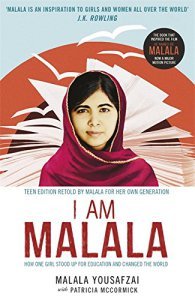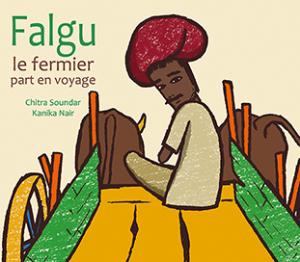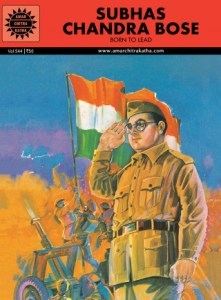Chitra Soundar's Blog, page 8
August 4, 2016
#coverkidsbooks – a plea
Today’s children are tomorrow’s adults, leaders, teachers, astronauts, scientists and even newspaper editors. Their literacy, imagination, desire to change the world for better is our only hope to a world that is full of peace, love and friendship. We need our young people to grow up with imagination, hope, curiosity, open hearts and open minds to embrace the world.

To be honest, we are not leaving them a very nice world. We are building walls and fences, we hurl bombs in the name of religion and peace. We have eroded our ecosystem and brought on global warming. In balance, we need to give them the power to imagine a better world. The hope that they can make it better if they stood shoulder to shoulder with every child in the world, brown or black or white, with varying abilities and varying sensibilities.
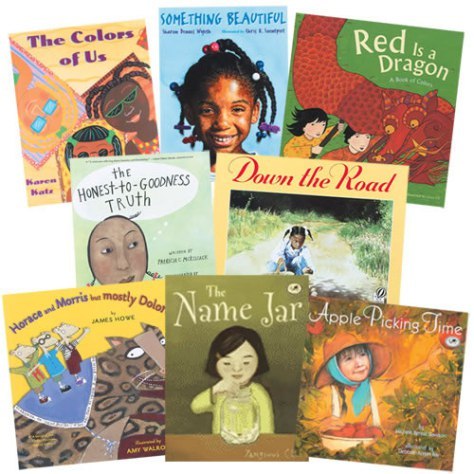

And who is going to give them that power? Is it the parents who are busy tending to a livelihood in these times of austerity? Is it the teachers who are struggling to keep up with forms to fill and boxes to tick? Do we give them out as advice in a manual? Do we sit them down for a lecture?
The only way our children and their children are going to understand the past, dream the future and shape this world’s destiny is by reading books. Books that tell them about distant worlds and cultures, 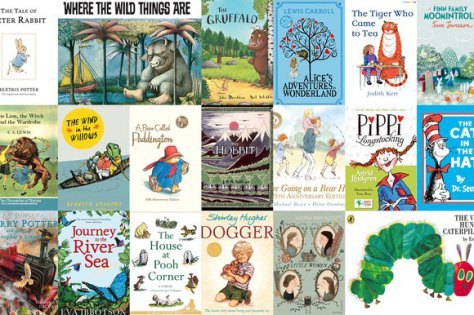 books that tell them about things around the corner, books about the earth, the space and the moon, books about brave warriors who can go on quests and books about girls who can change the world.
books that tell them about things around the corner, books about the earth, the space and the moon, books about brave warriors who can go on quests and books about girls who can change the world.
Children need to see themselves in stories that are positive, hopeful and perhaps even sad. Children need to find the fire in the words, the fire that lights their imagination, makes them fly into the sky and look around and say – this is my world and I’m going to make this better.
Lectures don’t work – not even with adults. Stories do. An engine that tries equips a child to try and climb up the sofa on his own as long as it takes. A snowy day celebrates the everyday joys of this fabulous planet.

Stories from faraway lands shows children that there are friends who have the same desires and hopes as them, beyond the oceans and across the mountains. Stories about their friends tell them the new girl in the hijab likes ice-cream too. They read about Anna Hibiscus and #1 Car-spotter and find out how kids in Nigeria grow up and how they too just want to go to school, make friends and listen to stories.

And for this reason, the adult world needs to acknowledge the power of stories, for young children. Adults have to acknowledge that if they don’t prepare their next generation to dream, imagine, hope and love, our human race has very little chance of survival.
Our planet is used to recreating herself. She brings on snowstorms and floods to erase the species at any given time and start fresh. Especially if we do not take care of her. So far we haven’t done a good job of it. But if we want to survive and not perish like the dinosaurs, we have to learn from what this planet has taught us. We need to help this planet rejuvenate by cutting down on greed and violence and look beyond our noses.
Looking after my two young nephews, I noticed that they learn better by watching me do things. And that meant I had to show them the right things to do. By reading books, by drawing random things on a white sheet of paper, by making up stories with them. They follow suit. They too want to read, tell stories and draw what’s in their imagination.
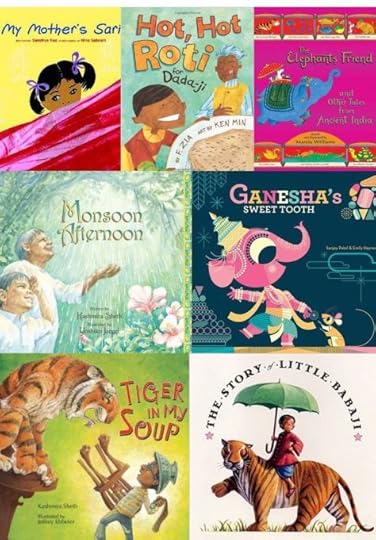
How do we replicate this across the nation? Across the world? We need everyone’s help. We need teachers to tell stories and read stories – where everyone can see them. We need parents, grandparents and aunts and uncles to put on a mask and muck about with Gruffalo and the Hungry Caterpillar. We need the media to celebrate books for children – fiction, non-fiction, picture books, story books not just from our island nation, from across the world, across the spectrum, for every child that wants to see his or her own reflection in books.

We need newspapers, television, politicians and celebrities to tell us what to read, discover gems from across the world, show us the best books our children should be reading. After all tomorrow’s newspapers, media, government and pop culture is going to be full of today’s children.
Here are seven ideas to bring more attention in the media to children’s books. They are important, even if I, as a children’s author says so. Even if I who is not a mother says so. Because even if I don’t have any children of my own, the children of this world, wherever they are, they are the masters of the universe tomorrow.
How about every talk show has one book on display just before the music is showcased?
How about every once in a while, instead of a pop song, a children’s song and the singer is showcased?
Every newspaper (online and print) has a feature showcasing one book a day. Just ask the people who work in the media industry who are parents. That’s in-house research for you.
All politicians on their website or twitter handle post one children’s book they read recently (or when they were young) at least once a week. If you want more votes in 10 years time, you’ve to cultivate your voters now.
Teachers walk around with your favourite book at school. Talk about it at random.
Parents – sit down for a quiet reading time after dinner (or before or both). You don’t even have to read together. You just have to read. And children will follow. Who knows, maybe you will rediscover your joys of reading too. (If you think you don’t like it or don’t have the time for it).
Authors, illustrators, storytellers, editors, bloggers – keep tweeting, blogging and talking about books. Don’t worry if you can’t see a revolution yet. The revolutionists are still growing up.
Want to do more? Sign this open letter started by S F Said.
July 24, 2016
How Malala Yousafzai has inspired me…
This week something profound happened. I did not travel miles and miles and find wisdom under a Bodhi tree. I found quiet wisdom and fiery inspiration in the book I read – I am Malala How One Girl Stood Up For Education and Changed the World.
I love to read biographies and this was one biography I was unconsciously avoiding. I wasn’t sure if all the hype would lead to disappointment. If like me, you were from South Asia, especially from the Indian sub-continent, you’d become wary of leaders, whether they are religious, political or social. Their sacrifices, their talks about selflessness and their actions rarely match. We grew up on a regular diet of movies that told us this was true and there has been and still there is a stream of politicians who couldn’t stand up to scrutiny.
I can’t remember what finally pushed me to reserve the book I am Malala by Malala Yousafzai (with Patricia McCormick) at my local Southwark library, but I did and I picked up the book the next day (our librarians are amazing! Follow them @SouthwarkLibs).
I opened to the first page in the prologue and I was hooked. Patricia McCormick has brought to life the words and experiences of Malala Yousafzai in quiet confidence. I didn’t stumble over a single word. I was pushed to turn the pages.
If the preface hooked me, the second paragraph in Chapter 1 made me laugh out aloud and bring tears to my eyes.
I’m a Hindu woman from India, who was a rebel in her own way, but have not managed to pass on the rebellious streak or the inspiration of standing up to convention to anyone. I fought my own battles, I survived them and I moved on. What could I have in common with Malala, an Islamic firebrand activist who stood up to the terrorists and wants to lead other children and women into education?
Well, Malala summed it up very well by saying, “I’m double-jointed and I can crack the knuckles on my fingers and toes at will. (And I enjoy watching people squirm as I do it.)”
I have never laughed so loudly (in a bus) as I read these sentences. I am double-jointed too (how many times I’ve used that as an excuse in the gym!) and I did the same. I’ve annoyed people by cracking my knuckles even when I was 9 or 10, grew up amidst dire warnings of “you will get arthritis”. Well it has been proven that that warning is not true. And so has Malala has gone against that the warnings about standing up to oppression.
I finished the book in less than 8 hours and I was deeply moved. For a day after I did not want to read another book. I wanted to ponder over not her words – but her life. Every once in a while comes a leader who is so unexpected, so undeniable that only tears can explain the joy.
I spent a couple of days thinking about what the book meant to me. And it took me back to a conversation I had with different people at different points in time.  Spolier-Alert – Name Dropping!
Spolier-Alert – Name Dropping!
I did a weekend course with Meg Rosoff at the Guardian. In the course, we ended up talking about truths. And it so happened, that Meg and the class found out about my “marital status” and the story behind it. Meg urged me talk about it in front of strangers in a group she used to be part of. I went to listen to others before I gathered up the courage to do the same (or not). I sat next to Patrick Ness (as he was invited by Meg to the event as well). How often does one meet two Carnegie winners in one night !? I did warn you about name-dropping. (I know, I know, no one likes a name-dropper.) Anyway while Patrick was busy tweeting, I was telling myself – ‘I possibly couldn’t do this. Go in front of 100 people and say how I stood up to arranged marriage.’ I never did.
And recently I met a couple of friends from India who are living abroad now – one because she conformed and the other because she didn’t. And these two women told me how important it was to tell the story – about the struggle I faced not just from my parents (who perhaps meant all the good in the world), but from family, from the society and the conventions of the world I lived in. I was told that so many girls who want to study, who want to better themselves and those who want to fend for their families do not believe that change is possible. And I owe it to the girls whether they are in the cities or towns or villages, those girls who accept their fate in spite of their misgivings.
I laughed it off. I always do. I didn’t want to be the British Indian writer who wrote about arranged marriage in Indian families. Incidentally I’ve been googling to find some great books about arranged marriage – I found a good list from authentic voices. Click here to download a list.
Fiction about Arranged Marriage – Authentic Voices from Chitra Soundar
I didn’t want to perpetrate the myth that Indian writers have to write about arranged marriage. Indian women are not defined by their arranged marriage. Yes, it changes them and limits them in many ways. But many women defy it inside the system as much as outside it. But then all marriages change women (and men).
It is not to say an arranged marriage is always fun and happy and liberating. It is not always. And that was the point my friends were making – tell the story, tell the girls they can step up and step out. I was reluctant and am still.
And there’s Malala. A girl, from a country where women’s rights are even less from where I come from, stands up and tells the world about her life, her desire to study and the right of girls to study and become whatever they want to be. In spite of being bullied, being threatened and being shot at.
Those who follow me on Social Media would have seen that I posted a #microaggression incident recently and how I was flustered and how I caved in to bullies on the train and all they had was arrogance. I can’t imagine myself defying the forces that Malala herself has.
So it made me think about my responsibility. All my life my mother has demonstrated by example that you can do what you can to better the lives of others. She defied convention in her own way by picking up volunteer work to help women and children in education.
I understand what Malala says about her Mum being her champion in quiet and steadfast ways. I get that. My mum is the same. My mum was stopped from going to school after Year 8. More because she wasn’t an academic. She is a tactile learner. She was good at doing things by hand and in sports. And that of course wasn’t an option. But even if she had been allowed to study, she wouldn’t have been allowed until her A-levels, because beyond that university was not an option for “respectable” girls.
So she pushed me to study. She was worried about my marks and proud of every single achievement. She worried when my sister was more like her self. More interested in doing than memorizing. But this time she didn’t let history repeat itself. She stood by my sister when my sister opted to get into fashion design than accounting or medicine or engineering.
I’m doing my Masters now in writing and my Mum is still championing it. When I went part-time in my day-job so I can write more and do my Masters, my Mum reassured my nervous Dad. And I can see how she would have reassured him in the privacy of their bedrooms when I was growing up about paying my school fees, about paying my extra tutorials or fees for computer class.
Before I started reading this book, I’ve been experimenting with comedy writing. People who have seen me play pranks (or fell victim to it) or those who work with me would know a bit about this hidden side. And many people found out when I opted to stand up in front of my SCBWI London group to tell lies about a book I wrote. I still get people walking up to me in SCBWI events saying they loved my “lying” which turned out to be real. And there are so many incidents like that where it was just life for me. And it is material for stories upon reflection. Stories that not only makes you laugh but also allows someone to be inspired.
That brings me back to my new inspiration – Malala. The signs of greatness are not sudden and one-off. You don’t turn overnight into a world leader. Malala has always been one. Even if she has reinforced the stereotype that we Asians love to study and do well in exams. And I love the fact that “being a world leader” interferes with being a sister, being a teenager and of course getting up in the mornings.
I’m still ruminating, pondering about how I’ve changed since I read this book. I have changed – and that’s for sure. Like Malala I believe in education. I would not be here – not just in the UK, but as a writer, an author of children’s books on world stage if I had not been given the opportunity to go to school. Education not only betters you, it betters the world because it gives you the tools to explore the world, the right from the wrong and know that life is practically in your own hands.
It is easy to forget about women’s rights living in a western country. There are multiple layers to women’s rights and girl’s right to education. Some layers have been peeled in the west and some are still the same across the world – be it gender gap or domestic abuse – we are not yet there. And only education can get us there.
In many parts of the world girls do not have the right to study and more importantly to make choices. And that is the fight Malala is fighting – whether the oppressor is shrouded in religious fanaticism or political dictatorship or cultural conundrums. And her father is helping her in that fight.
So finally I’m beginning to think about about writing a funny memoir -about how life brought me here and the odds behind it. Like my Grandma used to say – a steady line of ants can erode a mighty mountain. Every act of defiance, every act of standing up makes a difference.
One day in the next decade or two, I might write that memoir, I just hope when I do, there is no need for it. Every girl in every nook and cranny of this world would be free of shackles and would be free to study. Hopefully they will all read my book because they can, not because they have to.
If you are not into activism, or women’s rights or girls’ right to education, you should still read this book as a story of a girl who stood up to the oppressive regime in her land. It is a hero’s story, a hero’s journey and one that inspires.
If you do want to find out more about Malala's work, check out www.malalafund.org/voice.
If you would like to  find out other inspiring children – go to http://childrenspeaceprize.org/ and don’t just look at the winners, look at History -> and all the nominees.
find out other inspiring children – go to http://childrenspeaceprize.org/ and don’t just look at the winners, look at History -> and all the nominees.
If you’re still not inspired about doing something positive, you’re probably in a coma. See a doctor.
June 30, 2016
Pyramids of Caste and the Need for Inclusivity
I grew up under the shadow of the caste system in India. Castes are ancient constructs that defined professional and social place in the communities. The primary division amongst the ancient Vedic communities 1500 to 500 BC was the Varna. And within each varna, the jathis were defined.
Varnas defined the social classes – the pyramid of our society back in India for thousands of years. Then of course were the people who didn’t even have a place in this pyramid.
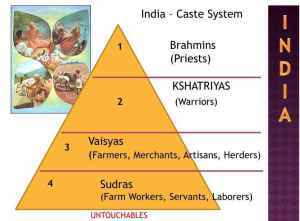
The Brahmins – who were teachers and priests
Kshatriyas – the kings and soldiers who protected and governed
Vaishyas – the merchants, the moneylenders who kept the economy going
Sudras – the people who performed hard labour.
This original system of social strata is so embedded into the collective memory that even after years of struggle many communities still are marginalized and exploited.
Even today most people have either a school certificate or birth certificate that ticks either of these. FORWARD / BACKWARD / MOST BACKWARD / SCHEDULED CASTE / SCHEDULED TRIBE. Although I must say this is to level the playing field.
India is also a product of multiple imperial and colonial occupations right from the time when the indigenous people of the peninsula were brought under the conquering Aryans from the North West.
 By Jaseem Hamza – http://www.panoramio.com/photo/756154..., CC BY 3.0, https://commons.wikimedia.org/w/index...
By Jaseem Hamza – http://www.panoramio.com/photo/756154..., CC BY 3.0, https://commons.wikimedia.org/w/index...Both in the north and in the south (which was separated by the Vindhya mountains), communities existed in the hillsides and in woods and forests. These communities are sometimes collectively called Adivasis – the ancient people. Many of these communities for generations before and after Independence (from the British) either were deprived of their land (and hence livelihood) or forced to move to towns and cities to look for work.
Caste was part of our life in every sense of the world. While there were no social restrictions in the cities I grew up in, divisions existed based on caste, jathis and religions. Home to perhaps every religion in the world, most people learnt to live together in harmony except when politicans whip up the frenzy to gain emotional response. That was true for castes too. Traditionally South Indian politics (even today) is driven by caste and the divide between the “indigenous” Dravidian people vs the enforced caste system that came from the Aryans. The political parties flaunt their Dravidian credentials to gain votes.
You can read more about the influence of castes in politics here.
I have always been drawn to stories told by ancient communities. Whether they are stories from Native American communities or the Maori tribes. I seek out stories from India’s ancient communities – be it from Andaman islands or from the hills of South India.
The Irular community is a tribe that inhabited and still inhabits the mountain ranges of the south-west. These communities are nature loving and were tribes who lived off the land, nurtured it and cherished it.

Their name, Irular, itself is a token of marginalization. Irul means dark in Tamil, one of the ancient languages of the world. Irular are people who are dark. While the tribes from Tamilnadu, the state that I belong to, are proficient in trapping venomous snakes and rats, the ones from Kerala are farmers. Today they would be classified under SCHEDULED TRIBES, whose tribal way of living has been sacrificed at the altar of development and modern politics.
Nowadays many of these families come into towns looking for construction work – given forests are being destroyed and the old way of life seemingly impossible. Even in the cities and towns, they often live in shanty towns and slums, looking for hard labour in construction and other industries.
One such legend is that of Pattan’s, the elder of the ancient Irular community in Kerala. Set in the valleys of the Sahayadri mountain ranges, Pattan’s Pumpkin tells the story of Pattan and his wife living in harmony with nature. One day he finds a bottle-gourd plant.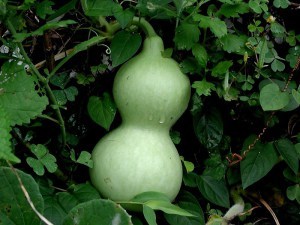
He replants it, nourishes it and the plant bears a fruit that grows and grows. Before Pattan could enjoy the juicy bottle-gourd, rains begin to lash against the mountains. For days the rain fell causing distress to animal and plants. Pattan must save his community somehow.
I’m sure you have spotted already that the cover shows a pumpkin and not a bottle-gourd. That’s because I’ve taken some artistic liberty to change the bottle-gourd into a pumpkin as it is a familiar fruit to imagine. The brilliantly talented Frane Lessac has brought it to life with her vibrant pictures.
I stumbled upon the story of Pattan in the research notes gathered by Philipose Vaidyar. I tracked him down to find out more about the story. And the journey began. I researched the Irular community, and my Dad scanned copious notes from the bowels of the Connemara Library, watched videos of their modern-day issues, read about the gorgeous mountain ranges they lived in.
For me, telling the story of Pattan symbolises many different things.
The story is a story of conservation and responsible farming that Pattan practiced thousands of years ago. Living one with the land, looking after other animals, birds and other living creatures including a bottle-gourd plant shows how ancient communities lived in harmony and highlights how we forget to look after the natural world around us.
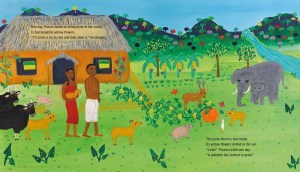 The story is not just another flood story. It is about embracing a world where we accept and celebrate differences amongst fellow human beings and appreciate the differences in our ways of life. It is about the duty every human has to protect, transform and grow the natural world around us.
The story is not just another flood story. It is about embracing a world where we accept and celebrate differences amongst fellow human beings and appreciate the differences in our ways of life. It is about the duty every human has to protect, transform and grow the natural world around us.
It is about a kind man who decided to save his community from the floods with ingenuity and quick thinking. It is a story from a community that has faced enormous hardship. Bringing a positive story from them to the world stage would open the window into their beautiful world.
Find out more about the power of stories especially about unheard voices and tell us about your own favourite books that celebrate differences and promotes understanding of the world.
April 28, 2016
Farmer Falgu’s Co-Creator Talks About The Series
 Kanika Nair is a visual storyteller. She has illustrated 22 children’s titles and designed 30 books for several award winning Indian publications. Her book titles have been published in English and multilingual Indian regional languages. Also, rights of recent titles have been sold to publishers in Japan, Germany, France and Africa.
Kanika Nair is a visual storyteller. She has illustrated 22 children’s titles and designed 30 books for several award winning Indian publications. Her book titles have been published in English and multilingual Indian regional languages. Also, rights of recent titles have been sold to publishers in Japan, Germany, France and Africa.
Kanika Nair is the fantastic illustrator of my Farmer Falgu stories published by Karadi Tales. We are celebrating the 2nd Anniversary of the first title in the series Farmer Falgu Goes on a Trip.
 Published by Karadi Tales
Published by Karadi TalesSince that day, Farmer Falgu has travelled to many countries and gone from strength to strength. Farmer Falgu is now available in French and Japanese and soon to be available in bi-lingual editions in Germany. Farmer Falgu will also be available in the US this autumn.
As co-creators, both Kanika and I are so proud of Farmer Falgu’s success. We are delighted that everyone loves Farmer Falgu as much as we do. So I asked Kanika Nair to talk about her experience of illustrating the Farmer Falgu series. Here is what she told me.
The Indian colourful cultural canvas has always fascinated and inspired my designs and illustration style. I enjoy the medium of STORYTELLING and believe it gives character, expression and voice to any design and thus effectively connect to its audience at a universal scale.
Farmer Falgu Series has been one of my favourites. While reading the script for illustrating I felt an interesting connection between the story and my hometown. Thus, decided to set the story in Rajasthan, a state in northern India that is rich in historical significance and famous for its vibrant colourful culture.
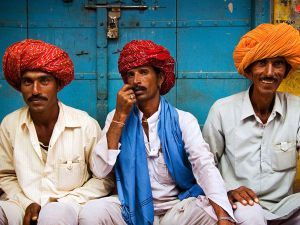 Since, Rajasthan is the place where I have spent most of my growing years, I had lots of insights to incorporate in the illustrations.
Since, Rajasthan is the place where I have spent most of my growing years, I had lots of insights to incorporate in the illustrations.
Chitra’s writing has so many layers in her style of storytelling in terms of sounds, characters and landscapes. Thus, giving a great opportunity to explore my imagination and creativity!
 Really joyful to witness that Falgu Series is been enjoyed by a wide audience at a global scale!!!
Really joyful to witness that Falgu Series is been enjoyed by a wide audience at a global scale!!!
You can find out more about Farmer Falgu’s journey here.
December 27, 2015
Looking Back at 2015

The year is almost over and as I scan my timeline for 2015 on social media and at the blogs I wrote this year – I must admit it has been a full year in more ways than one.
2015 started with a bang. Anansi’s New Web was accepted by OUP Pakistan after a long wait. The story had taken 7 years from creation to acceptance and the news came on New Year’s Day. Read about it here.
 Mid-January is Harvest festival in India and Farmer Falgu visited many homes during this festive period. Watch this space in 2016 for a story about how such celebrations led to Farmer Falgu – Book 4.
Mid-January is Harvest festival in India and Farmer Falgu visited many homes during this festive period. Watch this space in 2016 for a story about how such celebrations led to Farmer Falgu – Book 4.
Recommended by the eminent Jan Blake, CLPE invited me to tell stories in February. I had a blast telling stories from India to children from various schools. Look at the photos here.
 2015 was my first World Book Day as an author. I did a whopping 17 school visits in 6 weeks – across many parts of England. I told stories, made up stories with the children and introduced Farmer Falgu and Veera to many children. Some glimpses captured on camera here.
2015 was my first World Book Day as an author. I did a whopping 17 school visits in 6 weeks – across many parts of England. I told stories, made up stories with the children and introduced Farmer Falgu and Veera to many children. Some glimpses captured on camera here.
 Clever Camel (illustrated by Eugene Ruble) was published by Guardian Angel Publishing in July. Cheeky camel did a round of visits in Bexley and Slade Green community libraries in the summer.
Clever Camel (illustrated by Eugene Ruble) was published by Guardian Angel Publishing in July. Cheeky camel did a round of visits in Bexley and Slade Green community libraries in the summer.
I visited two libraries and a school in India via Skype this year. Miraculously the technology worked and we had roaring fun. The stories that we created during such sessions are available to read here.
Farmer Falgu and I also managed a Google Hangout session with 3 homes directly connected to me and we read the stories with the parents and children. Technology here was a bit on the rough side – something to work out for 2016. Find out more about our tele-story sessions here.
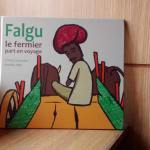
 2015 also marked new milestones for Farmer Falgu. He got his passport stamped in France and Japan. Find out more about these books here. The story of Farmer Falgu’s journey across continents is told here.
2015 also marked new milestones for Farmer Falgu. He got his passport stamped in France and Japan. Find out more about these books here. The story of Farmer Falgu’s journey across continents is told here.
2015 also saw signing of new contracts for a number of books.
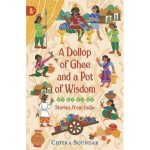 I signed with Walker Books for a second title to tell more stories about Veera and Suku, which is due out in 2016. Watch this space.
I signed with Walker Books for a second title to tell more stories about Veera and Suku, which is due out in 2016. Watch this space.
Farmer Falgu 3&4 are also in the making and hopefully available to buy in 2016 as well. Karadi Tales also commissioned a new title Varsha’s Varanasi (illustrated by Soumitra Ranade) which is in final stages of production now and due to be out in 2016 as well.
 Scholastic India signed me up for 3 titles of reading and activity book based on my favourite Panchatantra stories (illustrated by Nimisha Saikia). Those would be out in 2016 as well. Find out more about this here.
Scholastic India signed me up for 3 titles of reading and activity book based on my favourite Panchatantra stories (illustrated by Nimisha Saikia). Those would be out in 2016 as well. Find out more about this here.
 To top it all my first picture book in the UK – Pattan’s Pumpkin was commissioned, illustrated and ready for Frankfurt Book Fair in 2015. The amazing Frane Lessac and I hit it off big time and we are hoping to have a blast with Otter-Barry Books. Expect some Indian pumpkin recipes too to mark the book’s release.
To top it all my first picture book in the UK – Pattan’s Pumpkin was commissioned, illustrated and ready for Frankfurt Book Fair in 2015. The amazing Frane Lessac and I hit it off big time and we are hoping to have a blast with Otter-Barry Books. Expect some Indian pumpkin recipes too to mark the book’s release.
 All of us in our group sans Jay at the Christmas lunch in a nearby pizzeria
All of us in our group sans Jay at the Christmas lunch in a nearby pizzeriaI must also reveal to those who don’t know already that I finally took the plunge and signed up to do my Masters in Writing for Young People at Bath Spa University. With the first module under my belt, I am excited to be on this journey to push the boundaries of my writing, discover my strengths and fix my weaknesses. I have amazing tutors and fabulous classmates and this is a dream come true in so many ways. Yes it is tough to juggle life with work and writing and a Masters degree. But that’s the joy of it – life is full of happy challenges, and no minute is wasted.
 I should also mention that before my Masters started, I snuck in a short course of writing poetry for children with Roger McGough and Rachel Rooney at Arvon. What a fab week it was.
I should also mention that before my Masters started, I snuck in a short course of writing poetry for children with Roger McGough and Rachel Rooney at Arvon. What a fab week it was.
In 2015 I also visited three other schools in the second part of the year – each one different and fun in so many ways. From down the road in Shadwell to all the way in Lancashire (thinking of everyone there during the floods), I met with so many kids and brought Farmer Falgu and Gola and Balu to them from faraway India.
Through the year, I have become more conscious of diversity in children’s publishing in the UK, discussed Indian books in detail with various professionals in India and finding my voice as a BAME writer (or should I say a writer from multiple heritages). Read some of those interviews here. As part of this conscious effort, I also created a list of South Asian books for children – Saffron Stories.
In 2015 I launched the Kids Zone site for all things kids – activities, puzzles, recipes – all based on my books. All resources are free. Get them here.
Now it is nearing 2016. It’s been a busy year – writing, discovering, learning, teaching, travelling and meeting friends. I have made new friends and renewed connections with many old friends. I often think of myself as the people collector and I am glad my collection has grown both on Facebook and in real life.
I travelled with my parents to 6 towns in South India to discover the places my father lived as a boy and some places I lived as a child.
And with all this going on – I have read over 50 books this year and I still haven’t dented my ever-toppling tower of books to read.
In the last week of 2015, here I am in India, committed for two more events. I visited my favourite haunt in Chennai – Just Books Anna Nagar (27th December) to do a talk and sign books. It was a roaring success (even if I say so myself). I am reading a book to Karadi Tales team on the 31st December – a perfect round-off for a perfect year.
What would 2016 bring? What am I wishing for?
Well the list is long as usual and this is just for my writing life. My wish-list is usually my to-do list too – I believe in making things happen on my own. 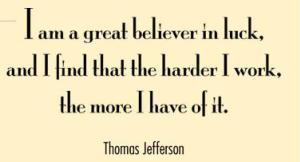 However there are some things only luck and fate can bring. So I have one wish for Santa (right at the end….)
However there are some things only luck and fate can bring. So I have one wish for Santa (right at the end….)
I want more time to read the ever-toppling mountain of amazing books.
Of course more time to write and experiment with words and stories.
I want to take the time to fill the well – be inspired, be open to experiences of all sorts and let loose my imagination.
My MA would be in full swing and I would start on my final manuscript. I could use all the help and energy I can get to make this the best it could be.
 And Santa if you’re listening, I wish for an Amazing Agent who would take me on and believe in me as a writer, so that I could write full-time.
And Santa if you’re listening, I wish for an Amazing Agent who would take me on and believe in me as a writer, so that I could write full-time.
I wish every one of you – friends – writers and illustrators, editors and publishers, readers, parents of readers, librarians, teachers – A WONDERFUL NEW YEAR!

December 4, 2015
A Letter to the Chin-up Chennai-ites
I have to write my assignments. I have to write stories for my next project. I have my taxes to do. But I cannot. I am focused on the floods back home where my aged parents are stranded in their second floor apartment with no contact.
Read a latest report from the BBC
It is not fair to blame the monsoon rains. Yes it has been terrifyingly the biggest ever. What Chennai received in one night is twice it usually receives in the month of December. I remember most of our Diwali celebrations and our Karthigai celebrations in November were often dampened by the pitter-patter of a toddler of rain. We always complained that our city is starved of rain. But this year it is an absolutely crazy beast. It was as if decades of cries from the people demanding rain reached this monster far away in a deep slumber and it awoke to bless us with decades of rain in a single month.
Find out why many experts believe this is not a natural disaster, but a failure of the administrators and town planners.
It is not fair to blame global warming either. Maybe some will say it is global warming and India should not be resisting preventative measures.
In a NDTV report, "We are now experiencing the full blown impacts of climate change. The extreme rainfalls that Chennai is experiencing is a direct outcome of our ever warming planet," said Chandra Bhushan, Deputy Director General of Delhi-based Centre for Science and Environment (CSE).
Nature has her own mind. We live in her mercy and often the line between the benevolent rain that nourishes our land and fills our dams before the blazing summers arrive and this vengeful force of wind and storm that hit the coast and the inland is very thin. All we can do is prepare for it. If we want to co-exist with nature, we need to listen to her, watch her curves and indents. Unfortunately we have plundered the city, cut down the mangroves and built up every inch of the city.
I blame myself. Should I be here in London – inside a centrally-heated flat, going to work and university as if nothing is wrong, carrying on with life so far away from the disaster that has struck my city, my family and friends? Shouldn’t I be with them? Have I deserted them for the charm of the first-world life? These questions arise inside every expat son or daughter in such situations. We desperately want to get in touch, hear our family’s voices, want to know that they are just inconvenienced and not terrified. Is that enough? Is that single phone call sufficient to keep my conscience from tearing my mind into pieces?
But if there is one entity that should accept blame, it should be the administration. Generally across India, the infrastructure is appalling. I travel a lot and visit many other countries similar to India who are growing at 5-6% per annum and those that are still developing – and one thing I find is the stark neglect of infrastructure in India. There is no visible town planning.
BBC examines why Chennai is flooded.
If you know someone who knows someone, then you can buy the land and develop it and sell it – whether or not those houses have drainage or water facilities, whether it is in a low-lying area or near a dam or a lake. No one cares, checks or questions these developments, including the newly rich and affluent who want to showcase their wealth.
Chennai newspaper The Indian Express asserts that the town planners have failed in Chennai.
In the 21st century, in a city that is experiencing economic boom due to its car-parts industry (India’s Detroit, they call it) and its computer-services industry – we do not have drainage systems that drive the water into the ocean which is less than 20 kilometres away. Every small rain the drains open up mixing sewage with rain water. Now in this torrential downpour, you are guaranteed to get garbage and sewage from neighbourhoods far away from you as the rivers flow into the streets. Telephone, Water, milk, food, electricity, cooking gas, petrol, diesel – every service has been disrupted.
When the sun comes out, and the water recedes, when the streets dry out, the power supply is restored – the Chennai people who are being praised for their courage and chin-up attitudes should stop being so courageous and think about what they want for their city.
As flood waters recede, the thoughts should return to how we can prevent this from happening again.
Fortitude to live through any calamity is not always a virtue. While the crisis is ongoing, perhaps there is no other alternative, than to roll up your sleeves and your sari and lungi and get into the water and wade through slush. But when this water recedes, when the sun returns to expose the dead animals under the water, the potholes on the roads that have been eroded by a month of rain – Chennai folks must stop being calm and content with what they have got.
Last year the Guardian examined whether Chennai is on top of its town planning, Perhaps its hopes are now dashed.
You need town planning. You cannot build a house wherever you want. You have to build a drainage system. Instead of taking ten years to build a flyover that has absolutely no purpose, take the next ten years to build a better drainage system. Build embankments and create flood prevention. Stop cutting down trees, plant more.
Demand from your governments that the Rs. 1000 crores and that has been doubled, given as aid is not just a publicity stunt. But don’t let them stop at giving Rs. 100 to a slum person in front of the cameras. Demand that they fix the city.
I wonder if I have the right to talk about this. I wonder if it is right to point fingers from the west? I was born in Chennai, I grew up in Chennai and I still have roots in Chennai. You can take me out of Chennai, but not Chennai out of me. Madras and Chennai, it is still home.
I also have the perspective of the outsider. I can see it more clearly now because I don’t live there. When I lived there, I was a chin-up Chennai-ite too. I would grumble about the roads and the traffic and the pollution, but I went about with my life. But now that I’m here and I only visit once or twice a year, I can see how over the last 15 years, things have gotten worse and not better.
I have travelled more now. I have seen more of other developing countries. I know this is not normal. Chennai is an old soul. It is traditional, it has no international ambitions of becoming a tourist spot. It does not take advantage of its beautiful beaches because it does not want people in swim costumes to parade on its soft white sands. I get that. But that does not mean you cannot modernize your infrastructure.
In her book The Politics of Heritage from Madras to Chennai, Mary E. Hancock (2008,35) talks about how Chennai has lacked town planning even under the British Raj and that has continues to be the same today. "Like other colonial cities, it was seen as a victim of the lack of systematic planning...Though the Madras Corporation had been charged with municipal administration since 1688 it has never functioned as a planning agency."
Moving from colonial times to independent rule, Hancock (2008,45) notes, "Broad patterns of land use in Chennai has followed colonial precedents...". She goes on to add (2008,50), "The metropolitan area's rapid development, therefore, has continued without explicit or approved planning guidelines, under the stimulus of an increasingly speculative real estate market."
I remember when I was 19 or 20. My dream was to become an IAS officer – an officer in the Indian Administrative service. The exams were tough and I was juggling a job and a masters degree and didn’t study sufficiently hard enough. But when I entered into the computer industry, I realized what a blessing that was. In the 90s, Indian computer industry was booming. I was one of the last people to desert the Chennai ship and move away from home. I had other reasons too. But I did leave. I have found no courage in me to return yet.
Detailed understanding of the Chennai Master Plan from Ar. M. Senthil [ senthilmani ]
The congested roads deter me. The pollution literally makes me ill. I cannot handle the sound of the blaring horns anymore. I cannot handle the power-cuts.
I am not afraid of hot summers or the humid weather or this battering rain. I am afraid of what we have created as a city – the man-made structures painted in fluorescent colours due to astrological predictions. I am definitely afraid of not having a park to go to, beautiful museums to visit and more importantly almost no bookshops. I am afraid to move back to a city that has been starved of culture and infrastructure.
This master plan tells me by 2026, there is hope. Can we engage as a city, would the citizens get involved and demand that their city is transformed?
So Chennai – stand up and demand better infrastructure, better facilities. Don’t adjust and move on. Demand that this masterplan is implemented. Don’t be in a rush to get somewhere without planning for it – you’d only be stuck in a gridlock.
November 7, 2015
Activity Books with Ancient Tales
Growing up in India was growing up with stories. As early as three or four years old, I was introduced to the ancient animal tales from the ancient book of stories and wisdom – The Panchatantra by Vishnu Sharma.
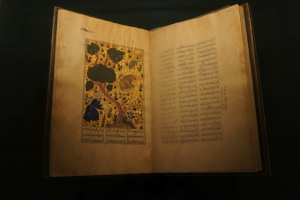 An ancient copy at the Chhatrapati Shivaji Maharaj
An ancient copy at the Chhatrapati Shivaji MaharajVastu Sangrahalaya formerly known as The Prince of Wales Musuem
These tales were not just meant for those studying politics and governance. It held the keys to the wisdom of everyday life – about friendships, trust, greed, desire and more. Cleverly linked stories inside a frame made it a lot of fun to listen to. Each frame story would start with one story and reveal layers and layers of stories inside it.
These stories travelled all over the world – west to the middle-east and far beyond, south towards Indonesia and further. They inspired many other bodies of work like the Jataka Tales which were Buddhist wisdom that drew upon existing folk stories,
 A page from the Arabic version of Kalila wa dimna, dated 1210 CE, illustrating the King of the Crows conferring with his political advisors.
A page from the Arabic version of Kalila wa dimna, dated 1210 CE, illustrating the King of the Crows conferring with his political advisors.As a storyteller and as a big sister, I’ve told these stories so many times. But until recently I didn’t get an opportunity to retell them in a book. When I was at Bookaroo 2014 (New Delhi), I briefly met Tina, who is an editor at Scholastic India. I didn’t think much of it at that time. Later a few weeks later, my publisher at Karadi Tales offered to introduce me to Tina with a recommendation about Farmer Falgu’s success. Of course I was delighted.
After reviewing some of the sample stories I had sent, Tina, the editor matched me to a project they had been thinking about. The stories would be popular stories from the Panchatantra but not in the usual picture book or illustrated book format. But as an activity book.
What did that mean, I wondered. Tina sent me a sample from a similar series of western fairy tales and I got the hang of what they wanted. The books were essentially a story colouring book. Children can read the stories and colour in the B&W drawings. Then they get puzzles, mazes, fun quizzes on the side related to the story.
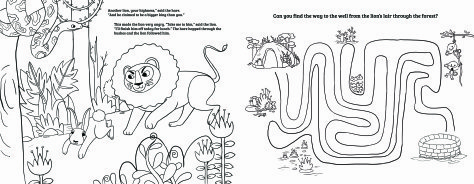 Here is an example of one of the spreads
Here is an example of one of the spreadsAmazing! I did the first story and laid out all the activities and I was so relieved when the text was accepted without too many changes. And then I got another good news. It was going to be a series – three books to start with and if things go well another three. Yay, I thought. I actually get to retell my favourite stories and let children interact with the text too.
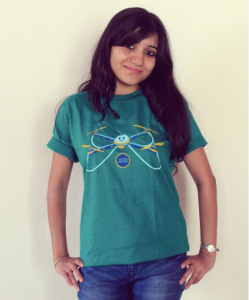 Nimisha Saikia
Nimisha SaikiaTina then chose the illustrator to be Nimisha Saikia – who is amazing and wonderfully talented.In the last few weeks, I’ve worked with her, I don’t think she needs sleep. She lives in India and emails at late UK hours. She suffers from both insomnia and brilliant talent. I love many of her infographic designs. You can find out more about Nimisha here.
Back to the stories themselves, Tina and I have agreed on three of my absolutely favourite stories and I am hoping to reveal each at a time just before the books come out.
The first story is the Lion and the Hare and one of the stories my grandmother told me when I was little. It is ancient tale of wit over strength.
 Cover for the first book. © Scholastic India
Cover for the first book. © Scholastic IndiaThe first book The Lion and the Hare will be out early 2016 and hope kids enjoy reading the story and interacting with it.
October 24, 2015
Farmer Falgu is going places!
 When I wrote the first Farmer Falgu story, I had specific goals.
When I wrote the first Farmer Falgu story, I had specific goals.
I somehow wanted to convey that this earth is never quiet and Quiet is not necessarily a fun thing.
I wanted to write a story about an Indian farmer
I wanted music and dance in the story.
The quiet and noise thought has been rattling around my brain for years and I didn’t figure out how to tell that in a story until I found Falgu.
Falgu didn’t start out to be a Rajasthani farmer. He was a north-Indian farmer simply because I had chosen a Hindi name. I should thank Kanika Nair, the illustrator for giving him a setting, a place of his own and all the joy and colour of Rajasthan. You can find out more about the creation of Falgu here.
Like always I put something of myself into every story. Whether it is finding a home in Where is Gola’s Home? Or my Grandma in Balu’s Basket, there is a bit of me in every story.
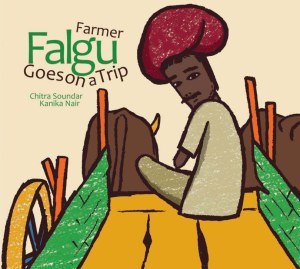 In Falgu, I gave him my courage to plod on in spite of circumstances. He has an unbroken spirit, he is always thankful he’s got a glass, whether it is half-full or half-empty and he’s off somewhere doing something.
In Falgu, I gave him my courage to plod on in spite of circumstances. He has an unbroken spirit, he is always thankful he’s got a glass, whether it is half-full or half-empty and he’s off somewhere doing something.
The music element of the book came from my desire to be a Karadi Tales author. They were traditionally an audio publisher and I thought musical elements in the story might pique their interest. Cunning of me? Sure!
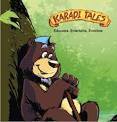 When Karadi Tales accepted the first title Farmer Falgu Goes on a Trip, it was like a dream come true in many ways. I was a KT author now, Farmer Falgu had a home – not long after he had set out in his trademark bullock-cart as a manuscript.
When Karadi Tales accepted the first title Farmer Falgu Goes on a Trip, it was like a dream come true in many ways. I was a KT author now, Farmer Falgu had a home – not long after he had set out in his trademark bullock-cart as a manuscript.
 Then of course, the spirit of Falgu lodged in my brain and thoughts. He was a real person. And I wrote another story for completely different reasons.
Then of course, the spirit of Falgu lodged in my brain and thoughts. He was a real person. And I wrote another story for completely different reasons.
I always believed – I think my grandparents and my parents taught me – to turn problems into opportunities. What can you do with the situation you’ve got? And my dislike of eggs and my fascination towards omelets.
I grew up hating eggs. But the thought of an omelet always fascinated the chef in me. I can see why an Indian omelet can be a great treat – it’s got all the spices, chillies, tomatoes and onions. I came close to eating an omelet so many times – simply because I liked it as a recipe. Alas, I don’t like eggs. The next best thing – put it in a story. Find out more about this story here.

And so, Farmer Falgu set out to the Market. With eggs. And of course all picture books believe in the power of three. So Falgu had to take with him – white eggs, brown eggs and duck eggs. I researched duck eggs a lot – I didn’t know what colour they were. I realized they come in all sorts of colours. I’m sure Kanika wasn’t too pleased with my egg choices.
Get the Fatafat Omelet recipe here.
Now there are 4 Farmer Falgu stories. The third one is almost ready and the fourth one is still being created by fabulous co-conspirator Kanika Nair.  Look out for the cover reveals and the story behind the story right here at www.chitrasoundar.com soon.
Look out for the cover reveals and the story behind the story right here at www.chitrasoundar.com soon.
So Farmer Falgu as far as I’m concerned has already gone places, right? From one story to four, from paper to real life, he has come to life for me in so many ways.He is a real person with a twitter account and all. Follow him @FarmerFalgu. But that’s not all.
has come to life for me in so many ways.He is a real person with a twitter account and all. Follow him @FarmerFalgu. But that’s not all.
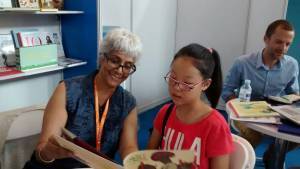 She’s always showing off Falgu to someone – this was taken in the Beijing Book Fair
She’s always showing off Falgu to someone – this was taken in the Beijing Book FairFarmer Falgu captured more hearts at the various trade fairs where my publisher Shobha showed him off to lots of people. Her love for Falgu is second only to mine, I’d think. She’d argue it is the other way around.
And now Farmer Falgu is in Japan already. He’s called Farga in the Japanese books (thank you Google Translate) and he’s still going places.

Et croyez-le ou non , il est là en Europe continentale trop , en France. Maybe I should set a new story in Paris for Farmer Falgu. The power of bullock-carts and his positive spirit has brought him to so many countries.
The kids in Japan and Paris are lucky – they’d have Farmer Falgu in their own languages and can enjoy the stories just like the kids in India do.
 And here is a hopeful thought – he might be coming to Germany too. Couple of weeks ago at the Frankfurt Book Fair, I dropped in on Falgu and Shobha at their stand. And lucky me, who was there? The German publisher who wants Farmer Falgu to come to Germany. Fingers crossed, the bullocks would take him across the continent to Germany.
And here is a hopeful thought – he might be coming to Germany too. Couple of weeks ago at the Frankfurt Book Fair, I dropped in on Falgu and Shobha at their stand. And lucky me, who was there? The German publisher who wants Farmer Falgu to come to Germany. Fingers crossed, the bullocks would take him across the continent to Germany.

What would he be called in German? Would Farmer Falgu have the same name? Or a different one? Who knows? Whatever he’s called he’d be still Falgu to me and he’d still be the same positive spirit he always is.
You can buy English, French and Japanese copies from here. I'm also offering a festival offer for the English language copies until 11th November. Don't miss.
September 27, 2015
What Good Books Do
Learning Indian history when growing up was like eating an Indian meal – the life you live now is the rice in the middle and you have these little cups on the side with lots of little offerings – never a lot, and never in depth.
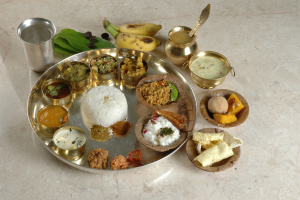
There were two choices to learn about history – school books and comics by Amar Chitra Katha. I think ACK did a better job of telling us stories that happened in history right from the pre-Islamic reign until perhaps the Independence movement, the freedom from the British Raj.
In school you learnt them for exams, nothing big in particular. To be really candid, I remember a few things from then, not a lot. It is amazing how like in the US I suppose, history was more inward looking. So a lot about Indian history, but don’t think we focused on the World Wars as Europeans do (or perhaps the British did).

It is not embedded into the psyche of the people as much – we don’t commemorate the wars, we don’t have war museums (I’m sure they are under-funded, if they exist) and we don’t have fiction set in the wars as much. People are more preoccupied with what’s going on today – ie, history is always in the making. That does lead to a level of unhinged anchors – because many of us don’t realize the price our ancestors paid for this disruptive democracy we have.
The one thing I remember from studying Indian History in school was the Sepoy Mutiny – what we call the Indian Mutiny of 1857. The year stuck in my head and I have never forgotten the courage and the calamity.
The rest I read from story books – rather non-fiction told in comic strips by ACK. (they are still available, if you want your kids to find out more about Indian history).
Some people stuck in my mind and they became part of the moral fabric of what I was made of eventually. I still quote them and more importantly weigh my decisions in the light of their lives.
Jhansi Rani Lakshmi Bai – 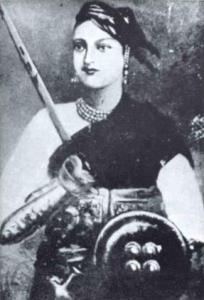 She was a story told over and over and to a young girl that’s a fiercely brilliant role model. My parents surely regretted it when I was a teenager fighting against all sorts of oppression – including staying late, refusing to do chores and getting arranged to be married. But Jhansi Rani taught me if you don’t believe in it, don’t do it. If you believe in it, fight for it. She was part of the Sepoy Mutiny too.
She was a story told over and over and to a young girl that’s a fiercely brilliant role model. My parents surely regretted it when I was a teenager fighting against all sorts of oppression – including staying late, refusing to do chores and getting arranged to be married. But Jhansi Rani taught me if you don’t believe in it, don’t do it. If you believe in it, fight for it. She was part of the Sepoy Mutiny too.
 Swami Vivekananda – the disciple of Ramakrishna Paramhamsa, the educated socialist who can articulate his thoughts really well. He preached equality, he preached religious acceptance. His words stuck in mind and I still think about it when I am in a situation where I might be unfair to someone – I’m paraphrasing him – but he said – Tolerance is not good enough. Acceptance is what you are obliged to. Here is the speech he gave in Chicago in 1893. Is it relevant today still? Duh!
Swami Vivekananda – the disciple of Ramakrishna Paramhamsa, the educated socialist who can articulate his thoughts really well. He preached equality, he preached religious acceptance. His words stuck in mind and I still think about it when I am in a situation where I might be unfair to someone – I’m paraphrasing him – but he said – Tolerance is not good enough. Acceptance is what you are obliged to. Here is the speech he gave in Chicago in 1893. Is it relevant today still? Duh!
This is what I got out of it – living in a caste-based society as a teenager. I had to evaluate every day in the light of this teaching – because life in India is not really fair to everyone (just like anywhere in this world).
Tolerance smacks of supremacy. You have to accept it because every religion has a place in this world – because it is one person’s spiritual journey. So there’s no question of one tolerating the other – you have to accept it.
And I think that’s one of the basic principles that have made me a global citizen today and perhaps even a storyteller who loves stories from all over the world.

Poet Subramanya Bharathi – this is an interesting connection for me. I read his poetry as a child. He wrote about women’s education, women’s right to walk tall and conquer the world. He asked women not to walk with their eyes to the ground but stare at the world ahead of them. He lived in the same city as me (sadly a few decades earlier). He was a militant type of poet – up in arms about any type of oppression. One of the reasons I read poetry was because I was attracted to his. I won a poetry prize in school and the prize was a collection of his poems and I still have it and treasure it.
More so, I was inspired by someone who believed women can rise up and change the world. Imagine the head-banging my parents went through as I digested these teachings and put them into practice. I argued about restrictions on clothes, about going out, about whether I can have boys as friends. If the poet knew about me , he would have been chuckling in heaven.
 Netaji Subhash Chandra Bose – Bose in India does not mean the wonderful speaker system named after another Indian Bose. Bose in India is Netaji. He was the militant double of the non-violent leader Gandhi. He had a different attitude to the British Raj and his was fighting against them. Of course he made some opportunistic choices and did not succeed and did not see India get freedom – but he did make connections with the Atlee and the labour party before he died, asking for Complete Independence.
Netaji Subhash Chandra Bose – Bose in India does not mean the wonderful speaker system named after another Indian Bose. Bose in India is Netaji. He was the militant double of the non-violent leader Gandhi. He had a different attitude to the British Raj and his was fighting against them. Of course he made some opportunistic choices and did not succeed and did not see India get freedom – but he did make connections with the Atlee and the labour party before he died, asking for Complete Independence.
Until Bose repeatedly argued for it, the Indian National Congress was fighting only for a dominion government – we will be British, but let’s rule ourselves. But Bose argued for a complete severance with the British. Eventually the mainstream politicians including Gandhi and Nehru adopted it too. JAI HIND, which is the national slogan of most Indians and the Indian Army was coined by Bose.
A lot of what I’m writing is from memory. I looked up a few things to see if I was making it up or remembering it wrong. But otherwise the impressions of those leaders are purely from my emotional fabric.
Here is a timeline showing how their paths might have crossed or not.
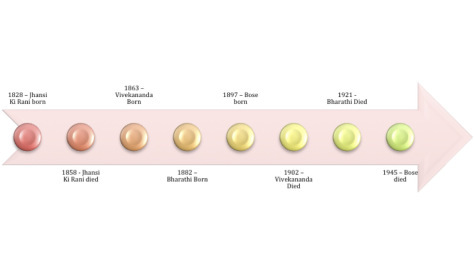
So why am I writing about this now? What brought on a flashback into India’s history. Well, what else? I read a book. Yeah, I do that a lot.
Anyway, I read this book that I bought a year or so ago, on the recommendation of a colleague at work. She loved it and she said I would like it too and it is called Elephant Moon.
I read a lot of fiction set in India, especially the wonderful Kiran Desai (The Inheritance of Loss, a Man-Booker prize winner), Arvind Adiga who won for The White Tiger and books written by my writer friends in India. I’ve read V S Naipaul, Ruskin Bond and so many more.
To be honest, I don’t read lots of Indian books written by non-Indians simply because I might not agree with the perspectives. It is a completely different lens. Of course that is not to say they are not great writers or their viewpoint is wrong – but for me, it is their version of India and perhaps being born in India, I prefer an Indian lens – you don’t see things I would see or vice versa.
Does that make me less open? Am I not seeing the world from another perspective? No, I have always seen the world from a British or American perspective because we grew up with foreign books mostly. If not for ACK, I wouldn’t have known much about India and would have learnt a lot more about English villages and cream tea.
As an adult, as someone living outside India for the last 16 years, I understand the different viewpoints and I can see the layer of colonial dust in the language even today when a British person would write about an Indian theme.
However I need to add quickly I understand the right / need for British view on India – they too lived in India. Many left behind legacies, families and more. Many stayed back. They had a different lifestyle I’m sure, a different viewing platform – we have a shared history for the duration of the Raj and a bit before and a bit after. It is good to hear the stories British want to tell about their time in India.
And now I live here and I’m technically British-Asian and understand the lens of the British better. As a child when I read a book about India, I did not check if the author was Indian or British. Now I do. But when I read them, I didn’t understand perhaps the tone or the pre-existing position of their elevated view. Now I do.
Anyway, I digress. I read this book about a British schoolteacher braving the jungles of Burma to enter India during the last few years of the colonial rule and of course when Japan attacked Burma.
A beautifully written book. The language was exquisite and evocative. There is a lot of voluntary admission that the British left too early and their mistakes during this time. (Tongue in cheek, I’m sure that’s all true).
But the axis to the plot was Netaji Bose. Although a lot of ifs and buts were added, to me the book seemed to call Bose a Fascist. It retracts and backtracks and repeats it – perhaps I have to read it again to see if it was as strong as I felt. Or did it touch an Indian nerve, a nerve I didn’t realise was sensitive?

As a child who grew up revering Netaji Subhash Chandra Bose, not remembering his association with the Japanese and the Germans at that time, it came as a shock to me. As far as I was concerned Bose fought against the British, anyway he can. His #1 target was British and anything else was fair game.
This led me to search for answers. See this is what good books must do. This book first made me vehemently refute what the author was saying. Then I wanted to find out more. I read more and I have a movie I want to watch about Bose.
From what I found out over the last two days, of course Bose associated with the Japs and the Germans – but he also met with the Labour leaders like Clement Atlee. (the conservatives refused to meet with him.) He wanted the British out of India – pure and simple. So he met with whoever would help him – and in that adventure ended up getting help from the wrong side of the fence. History also says he realized his mistake and tried to come back – but again with the help of the wrong side.
Perhaps it is the Karma we all Hindus believe in or the ill-will that was sent his way, his plane crashed and he was killed. (Or so we think… the conspiracy theories abound and only this week some 70 year old documents have been released and it opens the debate about Bose and his presumed death).
Here is a documentary about his life.
Bose like me believed in the Gita – the Hindu holy scripture. I believe in many of the tenets in it – the more spiritual ones. One says – Do your duty, be detached from the outcome.
Karmanye Vadhikaraste, Ma phaleshou kada chana,
Ma Karma Phala Hetur Bhurmatey Sangostva Akarmani
कर्मण्येवाधिकारस्ते मा फलेषु कदाचन।
मा कर्मफलहेतुर्भूर्मा ते सङ्गोऽस्त्वकर्मणि॥
Perhaps that’s what Bose did – he saw his duty as liberating India from the British – he did not expect any rewards in return. Whether everyone approved of his methods – perhaps not. But there is no one way to peel an onion or drive out colonial masters, I suppose. Sometimes the price you pay is bigger than what you had imagined or perhaps the not the price you wanted to pay. But it is easy to point fingers in retrospect and I am proud that he had the courage to step out of line with Gandhi and do it his own way.
So I thank this book for bringing me closer to the truths in my heart, to making me search for things I had forgotten and of course now rekindled my love for Indian history – without intending to.
Good books can do that to you. Keep reading.
*I'm still reading and researching this background of Bose. These videos I've quoted here are widely watched - but I cannot claim anything about their authenticity or accuracy of their research.
September 16, 2015
Skyping at Silly o’clock
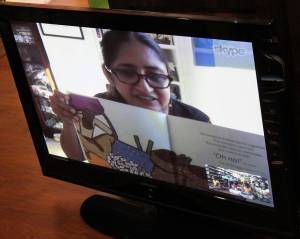 It all started with Just Books, Anna Nagar. I made friends with the fabulous folks from Just Books when I was in India couple of years ago and they kindly invited me to their book festival this year.
It all started with Just Books, Anna Nagar. I made friends with the fabulous folks from Just Books when I was in India couple of years ago and they kindly invited me to their book festival this year.
Of course travelling all this way to Chennai for an hour’s storytelling was as improbable as my pet fish becoming a rockstar on the moon. She doesn’t have much of a talent on the moon, no gravitas, you see.
So we decided I would Skype if Just Books could arrange the technical things – like a laptop, a TV connection and a microphone. Sounds simple, right?
It was relatively simple, I should think. I’m kidding. I was here just turning on the laptop where the Just Books team carried big TV sets into their library, laid cables, tested mikes, changed laptops until everything went BLIP_BLOP_BLOOOO and then back to working  again.
again.
We tested laptops, televisions, microphones, lighting and seating and we were ready to go. The thing is India is about 4.5 hours ahead of London – that means all my events happen at silly o’clock in the morning in London.
It’s just as well, that I’m a morning person – the one who could wake up at five, but couldn’t keep her eyes open after midnight.
News of this Skype session spread like a bad smell and I got invited via a good Facebook friend to visit Pathways School in Noida, near Delhi for their technology day. What better way to be inspired by technology than use it for fun. So I agreed. Again we tested the setup a day before at half-past six in the morning and then today I met with the kids at half-past six my time again.
 That’s a lot of early mornings, ready and bright to meet the world. Normally I get up really early but I couldn’t even let my invisible friend see me until noon – I walk around in my pjs, with no makeup, hair pinned up until hunger knocks on the inner stomach walls and remind me I have to feed the writing machine.
That’s a lot of early mornings, ready and bright to meet the world. Normally I get up really early but I couldn’t even let my invisible friend see me until noon – I walk around in my pjs, with no makeup, hair pinned up until hunger knocks on the inner stomach walls and remind me I have to feed the writing machine.
 Or if it is a day I have to go to a day job, my talking clock reminds me – IT IS LATE and I rush into work – hopefully remembering to take off my pjs and put on something more sensible and grown-up-ish looking.
Or if it is a day I have to go to a day job, my talking clock reminds me – IT IS LATE and I rush into work – hopefully remembering to take off my pjs and put on something more sensible and grown-up-ish looking.
Every time I do one of these sessions, I’m amazed how convenient this technology is. They can hear me, see me and listen to me tell stories. And then we always make up a story together and it is so much fun.  And I don’t even have to change out of my pj. Just change the top to something more respectable. I’m kidding. I do dress up before I meet impressionable young minds and show them authors are really grownup people. Most of the time I fail miserably.
And I don’t even have to change out of my pj. Just change the top to something more respectable. I’m kidding. I do dress up before I meet impressionable young minds and show them authors are really grownup people. Most of the time I fail miserably.
Today I met second-graders from Pathways School and they were an eager bunch in spite of the session being very close to their lunch hour.
I started with some things about myself, some questions to them and suddenly a voice popped up – When are you going to tell the story?
To the point. Just like me when I was his age. I am still told I come way too quickly to the point and I need to beat around the bush some more. The little person was right. So I told them the story from this book. 
 I was almost done, we had question time and the first question was – How do you write a story? How do you answer that?
I was almost done, we had question time and the first question was – How do you write a story? How do you answer that?
I can say I get ideas, I think about them,
I doodle, I dawdle,
I procrastinate, I fabricate, hyperventilate.
Then I get aggravated, agitated and put it away.
But the story is obstinate, I can’t eradicate it.
I’m fascinated and then I sit down and write.
And it goes on and on and on.
But that is not something I could tell a 7-year old who thinks somehow this process is magical filled with dancing puppies, unicorns in silk robes and Korean pop music in the background. So I decided to show him how it’s done. And we made up a story together.
I gently gave them a structure and they filled in the blanks with enormous doses of creativity – a dragon that wants to eat a – stand back and be surprised and be warned – a baby.
And then I asked what super-power does the baby have – pat came the answer – crying of course and at that point, ladies and gents, the story was born. The rest as we say was as simple as dragon’s dinner. Want to read the story? You can find it here.
I have to mention the absolutely wonderful teachers who arranged everything without a hitch. They were on time, they encouraged the children to participate and will be doing some of my book related activities in their classroom too. A big thank you to them for making this happen.

In spite of the early starts, that makes me wonder if I’m really a robot with a self-destruct button, I’m enjoying the time I spend with these young people. Especially when I meet with kids in India who are mostly told academics is the first thing, everything else comes later – a spark of a story can set fire to the Delhi downpours (thanks Adele, for a brilliant line, which I have borrowed and changed).
 So, to prove that I do have a self-destruct button, I have two more Skype sessions with India. The first one on the 19th (this coming Saturday), is with HippoCampus, Chennai. It’s free to attend and my books will be on sale to buy too. We will be creating a new story for Farmer Falgu.
So, to prove that I do have a self-destruct button, I have two more Skype sessions with India. The first one on the 19th (this coming Saturday), is with HippoCampus, Chennai. It’s free to attend and my books will be on sale to buy too. We will be creating a new story for Farmer Falgu.
And then I’m meeting with 9 parents and their kids via Google Hangout on Sunday and that’s a brand new experiment in the world of social media meets author who loves silly o’clock sessions. Let’s see how that goes. More sessions are on the cards – you can register your interest here.
That’s my super-late (for an early riser like me) report of today’s amazing session with Pathways school. The good news is I can sleep in tomorrow until 7 am. Blisssszzzzzzzzzzzz.


